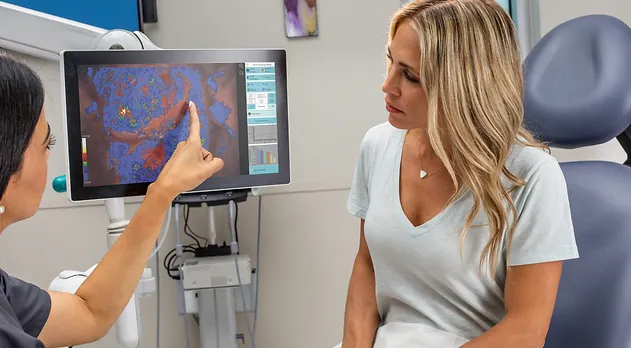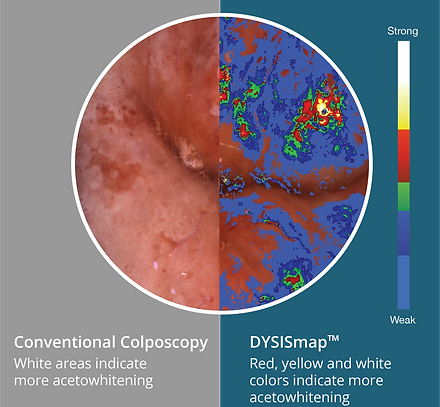Services:
What is a colposcopy?
Colposcopy is an evaluation of the cervix using magnification. This is primarily done following an abnormal pap smear to further assess the cause of the abnormality. Solutions are placed on the cervix to enhance the difference between normal and abnormal cells. Biopsies of the abnormal cells are often taken and sent to pathology for further evaluation.
Why It’s Done
Pap smears are part of a patient’s yearly pelvic exam. The Pap smear looks for changes or abnormalities in the cells of your cervix. If there are abnormal or unusual cells found, a Colposcopy is used to further investigate.
Colposcopies are used to find abnormal cells that have the potential to become cancerous in the cervix, vagina, or vulva. These abnormal cells are sometimes called “precancerous tissue.” A colposcopy also looks for other health conditions, such as genital warts or noncancerous growths called polyps.

What To Expect
Dr. Poppen performs colposcopies right in our office’s procedure rooms. Just like during your routine pelvic exams, you’ll lie on an exam table during the colposcopy. The entire procedure generally takes about 15 minutes.
During the colposcopy, Dr. Poppen uses a medical device known as a colposcope to look closely at your cervix, vulva, and vagina. The colposcope contains a bright light and a magnifying tool that allows us to examine changes in vaginal or cervical tissue and identify abnormal cells.
At the beginning of the colposcopy, we’ll brush your cervix with a vinegar-like solution known as acetic acid. This solution causes abnormal cells to turn white. Next, we’ll use a filter that shines colored light onto your tissue. This can highlight changes in blood vessels that may develop as a result of precancerous changes in your tissue.
If needed, Dr. Poppen will take small tissue samples, known as biopsies, during your colposcopy. These tissues will be analyzed under a microscope to better understand their function.
The overall procedure is similar to a Pap smear. Some people feel mildly uncomfortable during the process and may experience some minor spotting for a day or two afterward.
Once Dr. Poppen has more information about your cells, you’ll receive a recommendation about whether you need further care. You may require no treatment at all, as the abnormal cells may resolve on their own. We will let you know if follow-up exams or procedures are suggested.

Who needs a colposcopy?
After an abnormal Pap smear or a positive HPV test, your physician may recommend performing a colposcopy exam to look for abnormal cells on your cervix. These cells may indicate inflammation or pre-cancerous changes that could develop into cervical cancer if left untreated.
What is a DYSIS colposcopy exam?
The DYSIS computer-aided colposcope with cervical mapping quantifies the acetowhitening effect, which is an indication of abnormal cells. This helps your doctor select biopsies to catch abnormal areas early while they are small and easily treatable. It allows you to watch the exam if you choose, and your doctor can store images and video to compare to future exams if needed.
What is the DYSISmap?
The DYSISmap is a color-coded map of a woman’s cervix, which highlights the areas of the cervix having the strongest whitening. These are the areas that your physician may want to examine further through biopsy.
The DYSISmap helps you be better informed about your health. Be sure to ask us for a copy of your patient report for your records.


